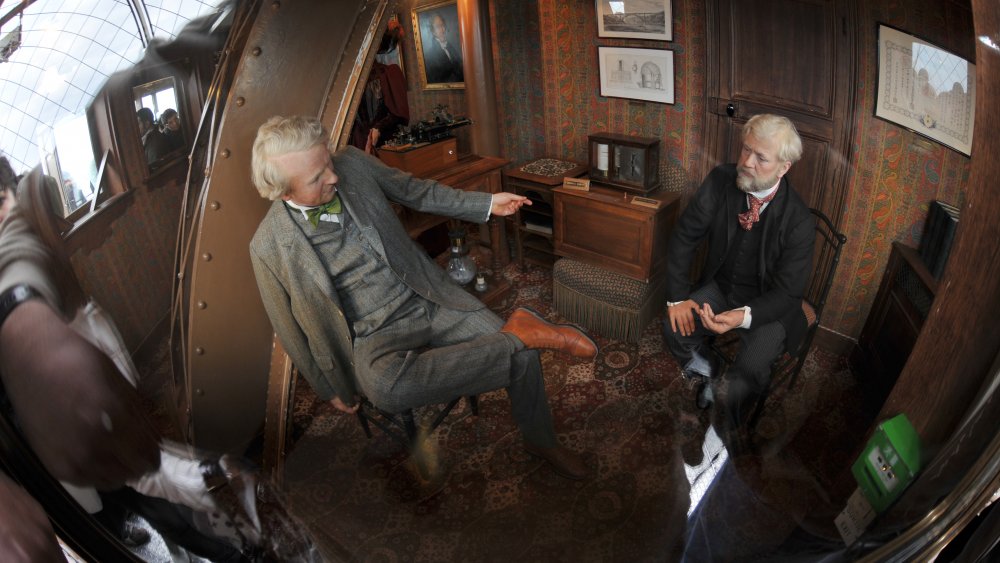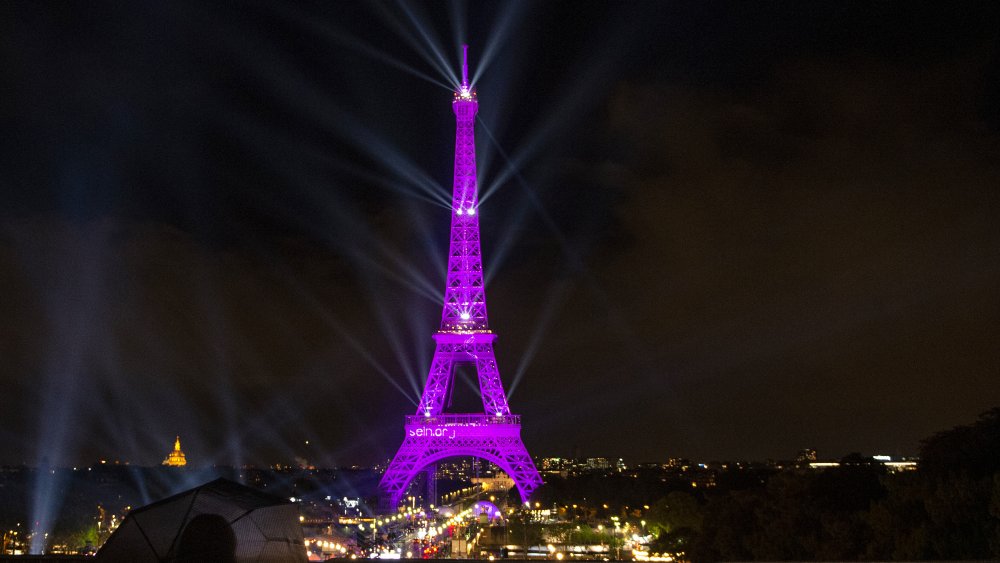The Truth About The Eiffel Tower's Secret Apartment
Designed by Gustave Eiffel for the centennial celebration of the French Revolution, the Eiffel Tower heralded a "revolution" in civil engineering, via the Encyclopedia Britannica. An imposing 1,063 feet tall, it could literally tower over older architectural marvels such as St. Peter's Basilica and Giza's Great Pyramid. Yet, construction took far less time, and fewer workers, than smaller monuments of antiquity required. Elegant and airy, the structure boasts sleek curves which the official Eiffel Tower website says were mathematically designed to maximize wind resistance.
Wind wasn't the only kind of resistance the tower had to contend with. Various artists and writers tried to poke holes in its appearance, which seems a tad redundant given its heavy reliance on lattices. Creative detractors attacked the Eiffel Tower as "a truly tragic street lamp," a "belfry skeleton," and in one particularly blistering insult, "a half-built factory pipe, a carcass waiting to be fleshed out with freestone or brick, a funnel-shaped grill, a hole-riddled suppository." Critics warned that the city of Paris risked making itself "irreparably ugly and bringing dishonor." Eventually, though, people would offer to spend top dollar for the honor of staying in the apartment atop the tower.
Eiffel puts the 'loft' in 'lofty'
A tsunami of anti-tower criticism dissipated for the most part after construction, per the Eiffel Tower website. However, History writes that novelist Guy de Maupassant despised the structure so much that he insisted on eating lunch underneath it just so he wouldn't have to look at its silhouette. Even if some people continued to see it as an eyesore, the Eiffel Tower was the belle of the 1889 World's Fair, attracting 2 million visitors. Gustave Eiffel became "the object of general envy" throughout Paris, according to Architectural Digest.
The envy didn't stem from the tower's top-tier popularity but the fact that Eiffel built a private apartment for himself at the top of it, which boasted an open-air balcony, a piano, a couch, a kitchen, a bathroom, and a toilet cubicle. However, it didn't have a bedroom. Gustave Eiffel used the space for experiments and esteemed visitors, like Thomas Edison. Author Henri Girard is quoted as saying that people offered to pay "a small fortune" to stay at the top-tier apartment.

